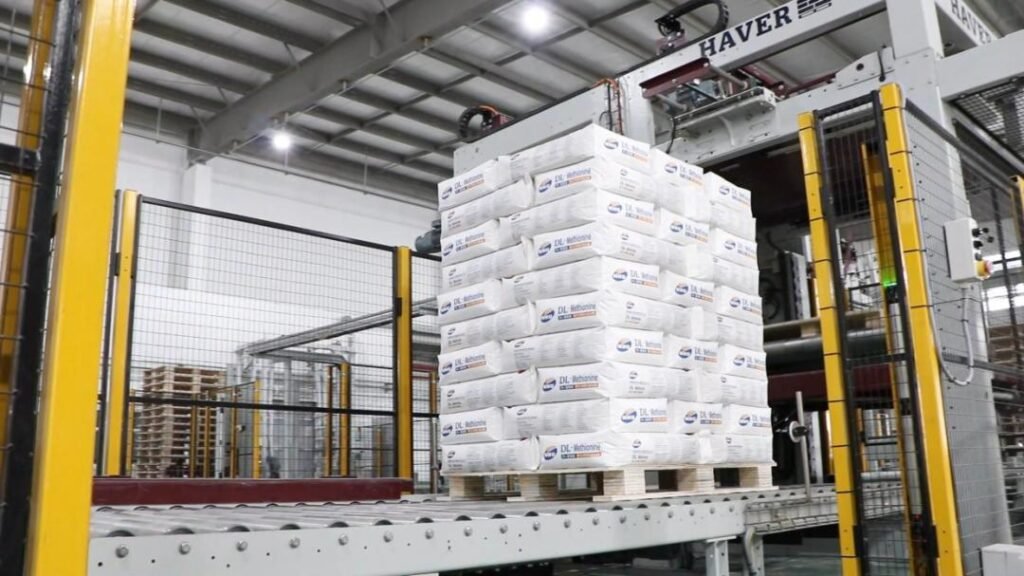
Amino acid production is a complex and energy-intensive process involving multiple links that require precise temperature control, such as fermentation, concentration, drying, crystallization, etc. These process links not only require high-temperature thermal energy support, but also generate a large amount of waste heat (such as waste steam and waste water). By recovering and reusing this waste heat, high-temperature heat pumps (HTHP) can not only significantly reduce energy consumption, but also optimize production efficiency, reduce carbon emissions, and help companies achieve green production.
Main thermal energy requirements in amino acid production
- Fermentation process
- Process: Microbial fermentation is used to synthesize amino acids (such as glutamic acid, lysine, etc.), which requires high temperature control.
- Temperature requirement: Usually 30~45°C, the temperature of the fermentation tank is controlled by hot water or steam.
- Source of waste heat: hot water discharged from fermentation tank cooling (temperature is usually 30~50°C).
- Extraction and separation
- Process: The fermentation broth is separated into amino acid products through filtration, centrifugation and other processes.
- Temperature requirements: The temperature of the extraction solution is generally maintained at 60~80°C.
- Source of waste heat: Waste water waste heat from filtration, centrifugation and other processes.
- Concentrate
- Process: Concentrate the amino acid solution by evaporation to remove excess water and obtain a highly concentrated product.
- Temperature requirements: The concentration process usually requires steam or hot water at 90~120°C.
- Source of waste heat: waste steam condensed by the evaporator (temperature 60~90°C).
- Drying
- Process: The concentrated amino acid solution is sprayed or air-dried to produce a powdered product.
- Temperature requirements: Dry air typically requires 100~150°C.
- Source of waste heat: hot air discharged from drying equipment (temperature 70~90°C).
Application scenarios of high temperature heat pumps
- Fermentation waste heat recovery
During the fermentation process, temperature control requires a combination of cooling and heating. Through a high-temperature heat pump, the waste heat in the cooling water of the fermentation tank can be recovered and its temperature can be raised to a level suitable for other processes (such as extraction, concentration, etc.).
- Case: The fermentation cooling water (temperature 30~50°C) is heated to 90°C through a high-temperature heat pump for evaporation and concentration.
- Concentration and evaporation waste heat recovery
In the evaporation and concentration process, the high-temperature heat pump can recover the heat of waste steam condensed by the evaporator, raise its temperature, and resupply it to the evaporator to reduce external steam demand.
- Case: The waste steam temperature is 70°C, which is heated to 120°C by a high-temperature heat pump and is directly used by the evaporator.
- Drying hot air optimization
The large amount of waste gas emitted by drying equipment (such as spray dryers) contains abundant low-grade heat energy. The high-temperature heat pump can recover the heat of the waste gas, heat it and recycle it to improve drying efficiency.
- Case: The exhaust gas (temperature 80°C) from the drying equipment is raised to 130°C through a high-temperature heat pump and reused by the drying equipment.
- Comprehensive utilization of overall waste heat
The high-temperature heat pump integrates waste heat resources in the amino acid production line to meet the multi-temperature needs of different process sections and form a closed-loop thermal energy management system.
- Case: Through the central high-temperature heat pump system, the waste heat generated in fermentation, concentration, drying and other links is uniformly recovered and used for heating extraction liquid, heating dry air and other needs.
Economic and environmental benefits
- Energy saving and consumption reduction
- Traditional method: Relying on coal-fired boilers or natural gas boilers to provide high-temperature steam and hot water, which has low thermal efficiency and high energy consumption.
- High-temperature heat pump method: Reduce boiler energy consumption through waste heat recovery, and increase the overall system efficiency to 300~500%.
- Reduce operating costs
- Reduce boiler fuel usage costs (such as coal, natural gas or electricity).
- Reduce the power consumption of refrigeration equipment and optimize production energy efficiency.
- Reduce carbon emissions
- Recycling waste heat reduces fossil energy consumption, significantly reduces CO₂ emissions, and helps achieve corporate carbon peak and carbon neutrality goals.
- Improve product quality
- The high-temperature heat pump heat supply is stable and controllable, ensuring precise temperature control of each process link during the production process and improving the quality of amino acid products.
Case study
Background data:
- The factory processes 200 tons of fermentation broth every day.
- 500 tons/day of water needs to be evaporated and the evaporator requires 90°C steam.
- Use a high temperature heat pump to recover evaporation waste heat (waste steam temperature 70°C).
Energy consumption calculation:

in conclusion
High-temperature heat pumps effectively reduce production energy consumption and operating costs by recovering waste heat in amino acid production, providing innovative solutions for enterprises to save energy and reduce carbon emissions. As environmental protection policies become increasingly stringent, the application potential of high-temperature heat pumps in amino acid production will become more significant, not only bringing direct economic benefits to enterprises, but also making important contributions to the sustainable development of the industry.

